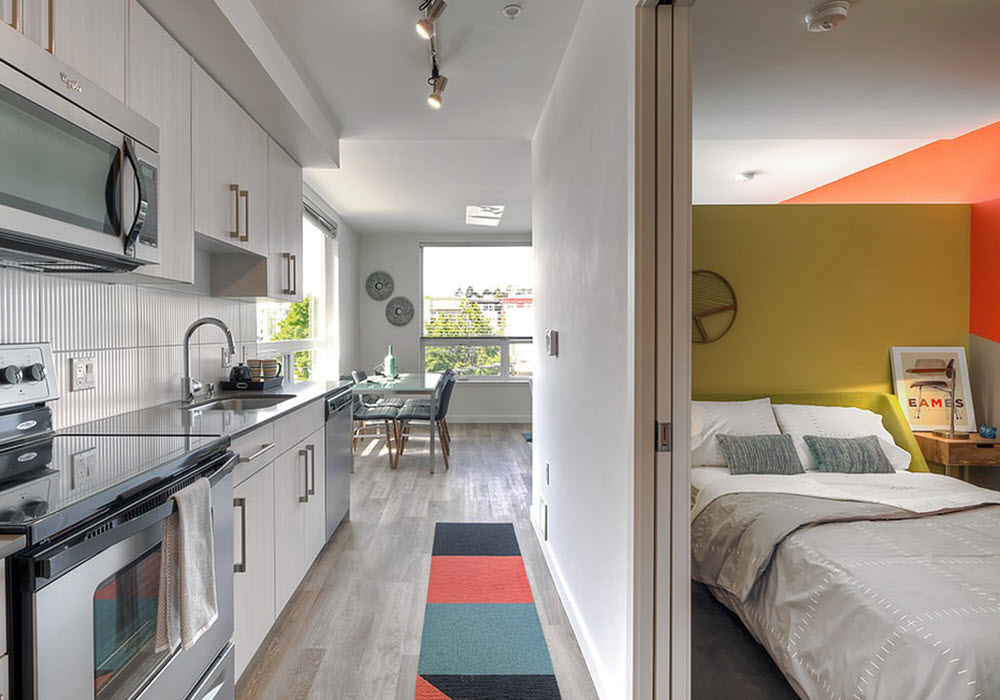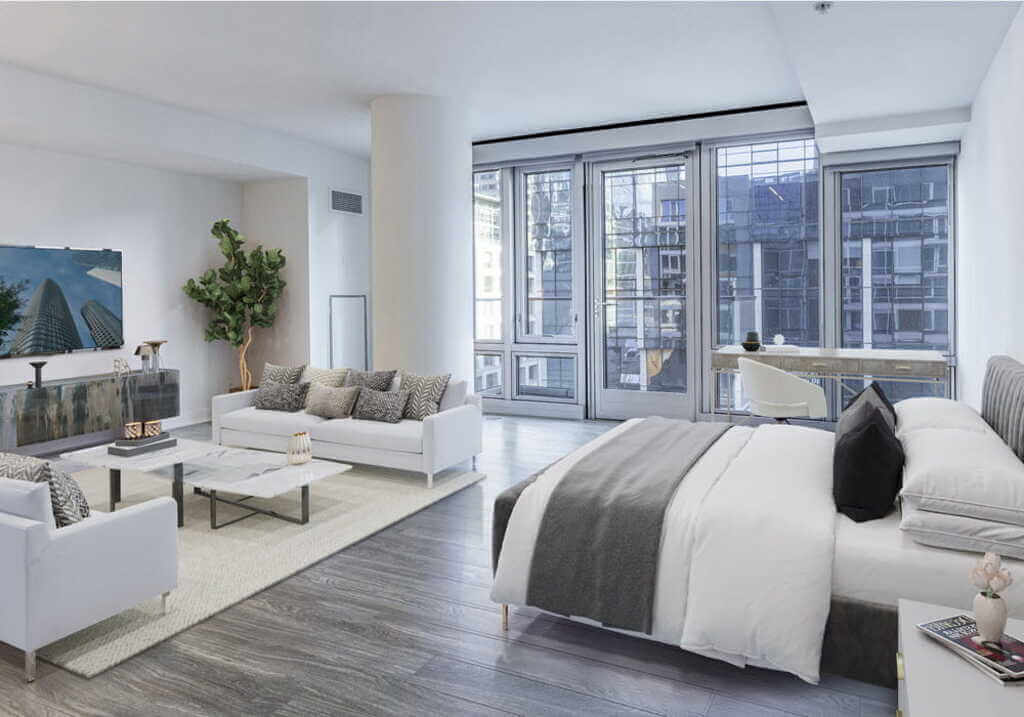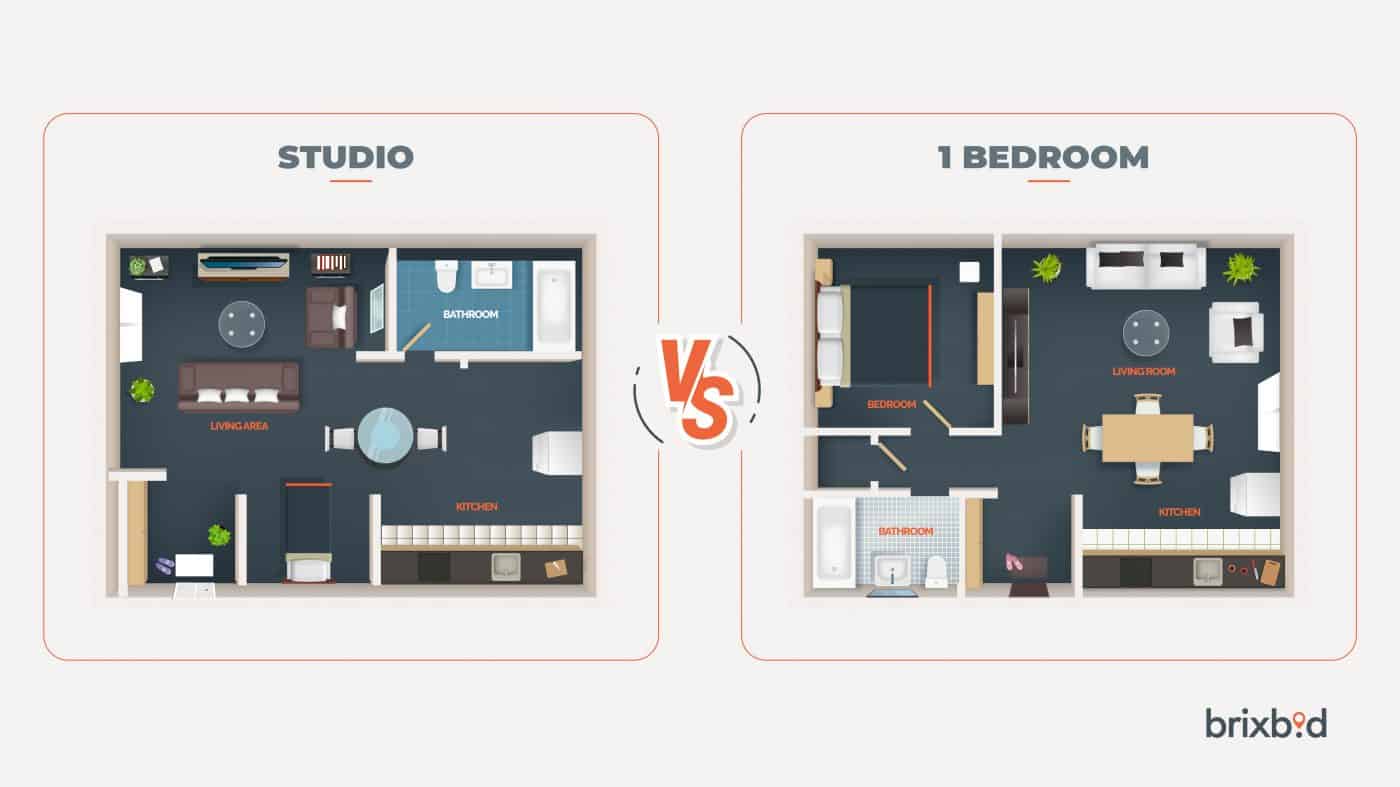Space and Functionality

The size and layout of a living space significantly impact its functionality and suitability for different lifestyles. Studio apartments and one-bedroom apartments offer distinct advantages and disadvantages, making them better suited for certain individuals or groups.
Typical Square Footage
The typical square footage of a studio apartment is generally smaller than that of a one-bedroom apartment. Studios often range from 300 to 600 square feet, while one-bedroom apartments typically range from 500 to 800 square feet. This difference in size directly affects the amount of space available for living, sleeping, and storage.
Layout Differences
The layout of a studio apartment typically combines the living, sleeping, and kitchen areas into a single open space. This layout can be efficient for single individuals or couples who prefer a more open and flexible living arrangement. In contrast, a one-bedroom apartment provides a separate bedroom, offering privacy and a dedicated space for sleeping. The kitchen in a one-bedroom apartment is usually separate from the living area, creating a more defined space for cooking and dining.
Functionality for Different Lifestyles
Single Individuals
A studio apartment can be a cost-effective and practical option for single individuals, as it eliminates the need for a separate bedroom. The open layout allows for flexibility in furniture arrangement and creates a sense of spaciousness. However, the lack of privacy may be a drawback for some individuals.
A one-bedroom apartment offers more privacy and a dedicated space for sleeping, which can be beneficial for individuals who value their personal space.
Couples
For couples, a studio apartment can be a cozy and intimate option, especially if they are looking to save on rent. However, the lack of separation between living and sleeping areas may limit privacy and create challenges for guests. A one-bedroom apartment provides more privacy and a dedicated space for sleeping, which can be beneficial for couples who prefer a more defined separation between their living and sleeping areas.
Roommates
Studio apartments are generally not recommended for roommates, as the lack of separate bedrooms can lead to privacy issues and conflicts. A one-bedroom apartment is more suitable for roommates, as it provides a separate bedroom for one person, while the other can use the living area as their sleeping space.
Comparison Table
| Feature | Studio Apartment | One-Bedroom Apartment |
|---|---|---|
| Square Footage | 300-600 sq ft | 500-800 sq ft |
| Kitchen Appliances | Typically includes stove, oven, refrigerator, and microwave | Typically includes stove, oven, refrigerator, dishwasher, and microwave |
| Bathroom Fixtures | Typically includes a shower/tub combination, toilet, and sink | Typically includes a shower/tub combination, toilet, and sink |
| Storage Options | Limited built-in storage, often requires creative solutions | More built-in storage, including closets and cabinets |
Cost and Affordability: Studio Apartment Vs 1 Bedroom

The financial aspect is a crucial consideration when choosing between a studio apartment and a one-bedroom apartment. While studios offer a more compact and potentially budget-friendly option, one-bedroom apartments provide more space and privacy. Let’s delve into the cost differences and factors influencing the affordability of each option.
Average Rental Costs
Rental costs for studios and one-bedroom apartments can vary significantly depending on the city, neighborhood, amenities, and building age. However, generally, one-bedroom apartments tend to be more expensive than studios. For example, in New York City, the average monthly rent for a studio apartment can range from $2,500 to $3,500, while a one-bedroom apartment can cost anywhere from $3,000 to $4,500.
Factors Influencing Price Differences
Several factors contribute to the price disparity between studio and one-bedroom apartments.
- Location: Apartments in desirable neighborhoods with convenient access to transportation, amenities, and attractions typically command higher rental rates. This applies to both studios and one-bedroom apartments, but the difference in price can be more pronounced for one-bedroom apartments.
- Amenities: Buildings with amenities like gyms, pools, laundry facilities, and rooftop terraces often have higher rental costs. The availability of these amenities can influence the price difference between studios and one-bedroom apartments, as one-bedroom apartments may have access to a wider range of amenities.
- Building Age: Newer buildings with modern finishes and appliances generally have higher rental rates compared to older buildings. The price difference between studios and one-bedroom apartments can be affected by the age of the building, as one-bedroom apartments in newer buildings may have more modern features and higher rental costs.
Potential Cost Savings of a Studio Apartment
Choosing a studio apartment can lead to potential cost savings in several areas.
- Rent: The most significant cost saving is typically in the rent itself. As mentioned earlier, studios often have lower rental rates than one-bedroom apartments, especially in high-demand areas.
- Utilities: Smaller spaces generally require less energy to heat and cool, potentially leading to lower utility bills. For example, a studio apartment may require less electricity for lighting and appliances compared to a one-bedroom apartment.
- Furniture: Furnishing a studio apartment requires less furniture, potentially leading to lower upfront costs. A studio apartment may only need a bed, a sofa, a coffee table, and a dining table, while a one-bedroom apartment might require additional furniture for the bedroom and living area.
Monthly Cost Comparison
The following table provides a potential monthly cost comparison between a studio apartment and a one-bedroom apartment in a major city:
| Cost Item | Studio Apartment | One-Bedroom Apartment |
|---|---|---|
| Rent | $2,500 | $3,500 |
| Utilities (Electricity, Gas, Water) | $150 | $200 |
| Internet | $70 | $70 |
| Groceries | $400 | $400 |
| Total Monthly Cost | $3,120 | $4,170 |
Lifestyle Considerations

The choice between a studio apartment and a one-bedroom apartment often comes down to lifestyle preferences. Both offer distinct advantages and disadvantages, particularly in terms of privacy, social interaction, and work-life balance.
Privacy and Personal Space
The primary difference between a studio apartment and a one-bedroom apartment lies in the separation of living spaces. A studio apartment typically combines the living room, bedroom, and kitchen into one open space, while a one-bedroom apartment offers a dedicated bedroom for sleeping and privacy.
- Studio apartments can feel more cramped and offer less privacy, especially for those who value personal space and solitude. This can be particularly challenging for couples or individuals who work from home and require a dedicated space for work and relaxation.
- One-bedroom apartments provide a greater sense of privacy and personal space, allowing for a more defined separation between living and sleeping areas. This can be beneficial for those who prioritize their own space and prefer a more traditional apartment layout.
Social Interaction and Entertaining Guests
Studio apartments can be more conducive to social interaction and entertaining guests due to their open layout. The lack of physical barriers allows for a more intimate and informal atmosphere.
- A studio apartment can feel more welcoming and inviting for social gatherings, as it encourages a sense of togetherness and shared space. This can be especially appealing for individuals who enjoy hosting parties or frequent gatherings with friends and family.
- One-bedroom apartments can present challenges for entertaining guests, as the living room may need to double as a bedroom, limiting space and potentially affecting privacy. However, the separate bedroom can provide a retreat for guests who prefer more privacy.
Work-Life Balance and Dedicated Spaces
The lack of dedicated spaces in a studio apartment can pose challenges for maintaining a healthy work-life balance. The open layout can make it difficult to create clear boundaries between work and leisure, potentially leading to distractions and burnout.
- Studio apartments may require creative solutions for separating work and living spaces, such as using room dividers, furniture arrangements, or even designated areas for work. This can help create a sense of separation and improve focus, but it may not always be as effective as a dedicated office or home office space.
- One-bedroom apartments offer the advantage of a dedicated bedroom, which can serve as a sanctuary for relaxation and sleep. This separation of spaces can contribute to a more balanced lifestyle, allowing for a clearer distinction between work and personal time.
Creative Interior Design Solutions, Studio apartment vs 1 bedroom
Maximizing space and functionality in a studio apartment requires clever interior design strategies.
- Multifunctional Furniture: Utilizing furniture that serves multiple purposes, such as a sofa bed or a coffee table with storage, can maximize space and reduce clutter.
- Vertical Storage: Utilizing vertical space with shelves, wall-mounted organizers, and hanging storage solutions can create a more organized and spacious feel.
- Mirrors: Strategically placed mirrors can create the illusion of more space by reflecting light and making the room appear larger.
- Light Colors: Using light colors for walls and furniture can brighten the space and create a sense of openness.